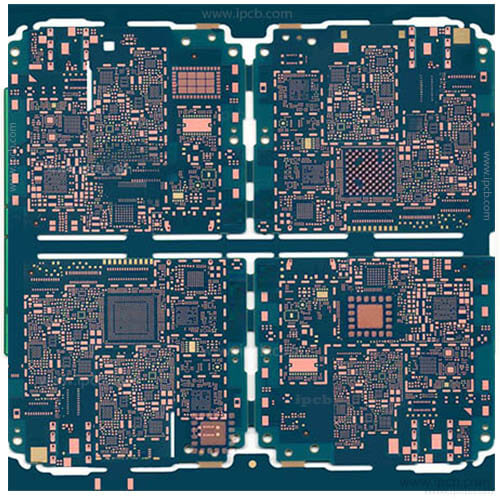The application of dry resist to laminates still uses the heating roll method to apply resist to the core material. This is an older technical process and it is now recommended that the material be preheated to the required temperature prior to the laminating process of the PRINTED circuit board at the HDI circuit board plant. Preheating of the material allows the dry resist to be applied more stably to the surface of the laminate, drawing less heat from the hot roll and giving the laminate a consistent and stable exit temperature. Consistent inlet and outlet temperatures result in less air retention below the film; This is essential for the reproduction of fine lines and spacing.

This TYPE of HDI/BUM board structure refers to the HDI circuit board formed by the conventional production of PCBS (various types of boards obtained by CNC drilling, such as single-sided, double-sided and multi-layer PCBS or multi-layer boards with buried/blind holes, etc.) as the "core board", and then adding 2~4 layers of higher density conductive layers on one side or both sides of the "core board". Can be referred to as "core +SLC" structure type. Because of the various types of "core board" structure, various structures can be derived.
The characteristic of this type of structure is that it can make full use of the existing PCB production equipment and conditions to achieve a high density. However, the "core board" of its skeleton (rigidity and flatness of the board surface) is used to achieve HDI/BUM board with very high density assembly requirements by means of the SLC method (2~4 layers). This type of HDI/BUM board can also be considered as a transitional structure type from the current conventional high-density PCB production to higher density PCB (packaging substrate).
The layers of the laminated part of this type of structure are made of RCC as the main material, and are completed by laser pore-forming, and most of them are made of CO2 laser (wavelength of 10.6um--9.4um), and the aperture size is between 100um~ 200um. In order to control the thickness and uniformity of the medium layer in the accumulation. The resin thickness in RCC should not be too thick, mostly 40um~ 80um. Or use about 50% thickness as curing state, the rest as semi-curing state for filling wire gap and interlayer bonding, and control the thickness of the medium.
The above is the structure characteristics of HDI circuit board, more HDI board need to consult ipcb PCB circuit board manufacturers, they are professional circuit board proofing manufacturers, many years of PCB production experience, professional improve HDI circuit board, buried blind hole PCB, thick copper plate, high multilayer board, etc..